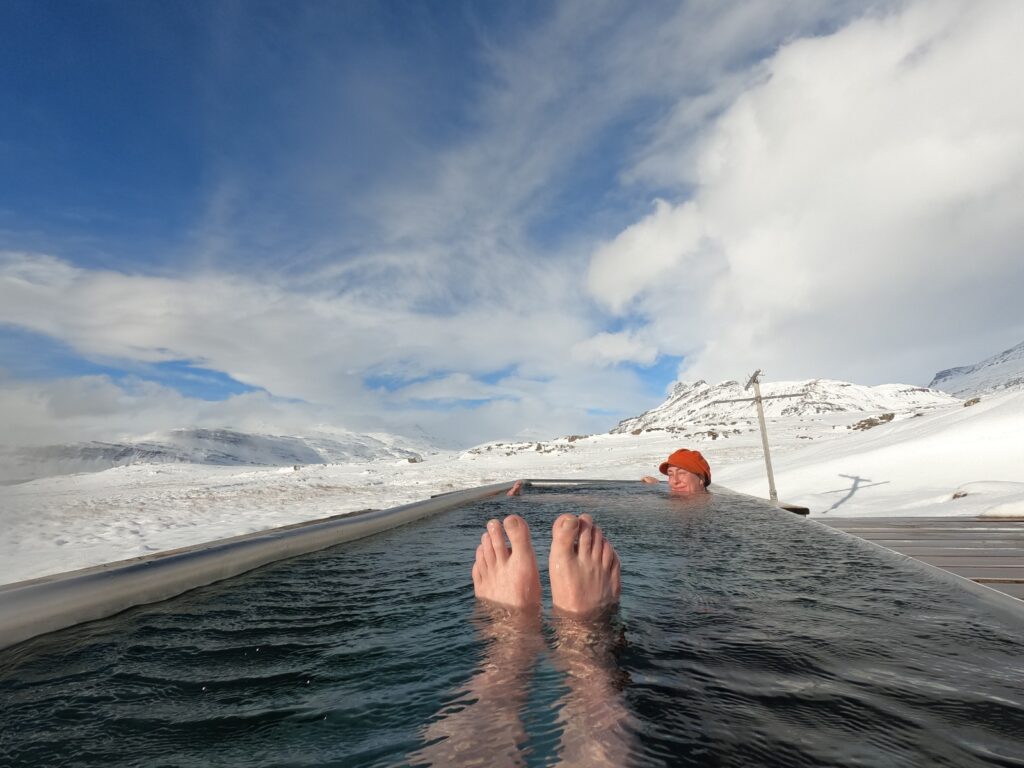Geothermal energy can be defined as geothermal heat (jarðhiti) that reaches the earth’s surface. Where volcanic activity is high, porous rocks are formed, which allow water to flow in and heat.
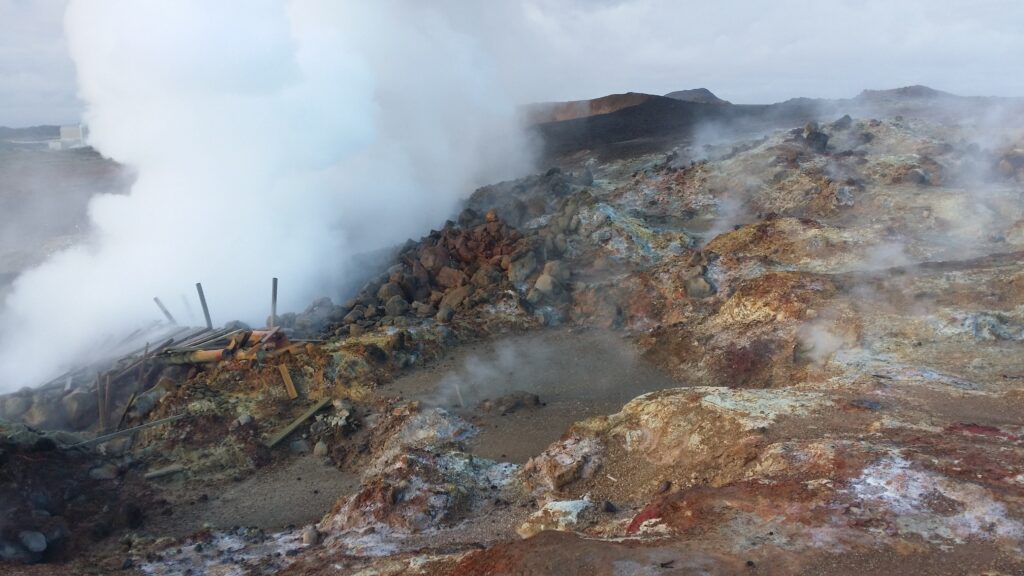
Geothermal energy can be utilized directly by heating, or for electricity production or both.
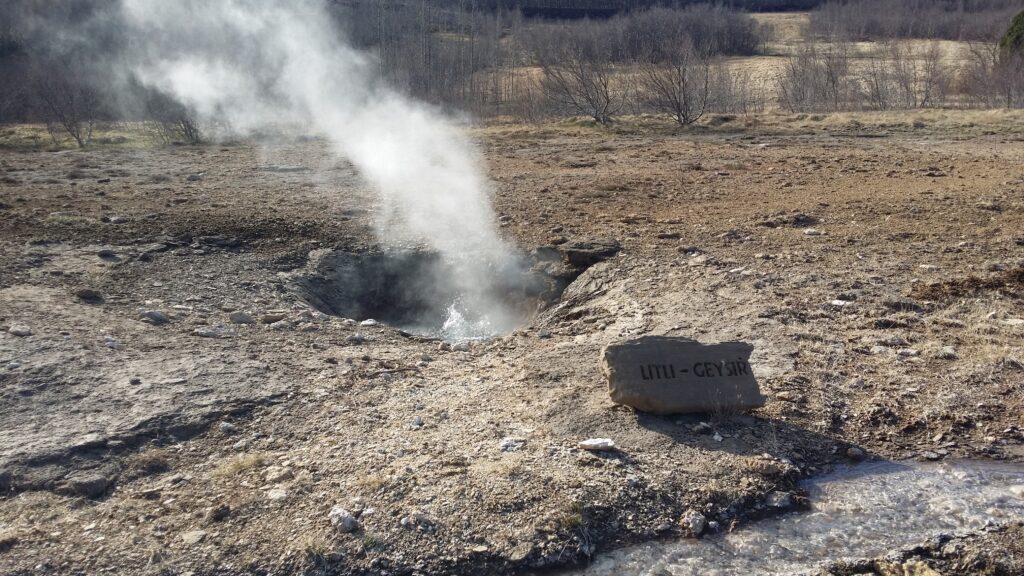
A distinction is made between hot springs, mud springs and sulfur springs. Iceland has hot springs almost everywhere – the fewest in the east and northwest – the oldest parts of the country. Highest geothermal activity is found between the continental plates, in the fissures that run over Iceland from southwest to northeast.
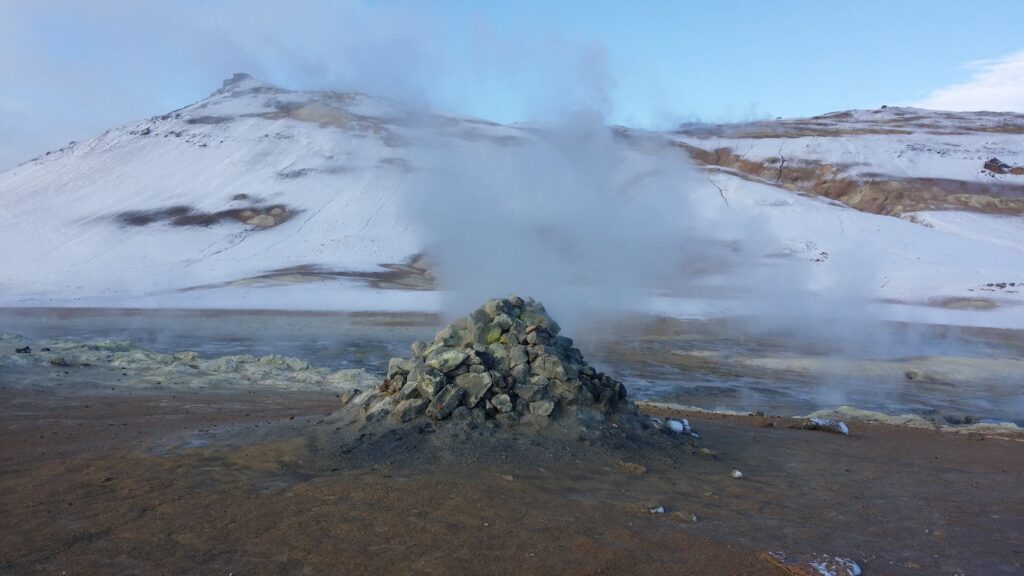
A Google search shows that Iceland has more than 200 baths. Divided by 350,000 inhabitants, you get the highest density of bathing facilities in the world. This is not only good for hygiene and exercise. For Icelanders, bathing is an essential part of the culture, and the baths are important meeting places.
For the traveling tourist – just let yourself get carried away! You can find hot springs almost anywhere. One hot pot we were really fascinated by was the ‘Sink at Djúpivogur’. Drive south of the city, and just off Highway 1 you will find ‘Djúpavogskörin’, a hot pot that looks like a sink.
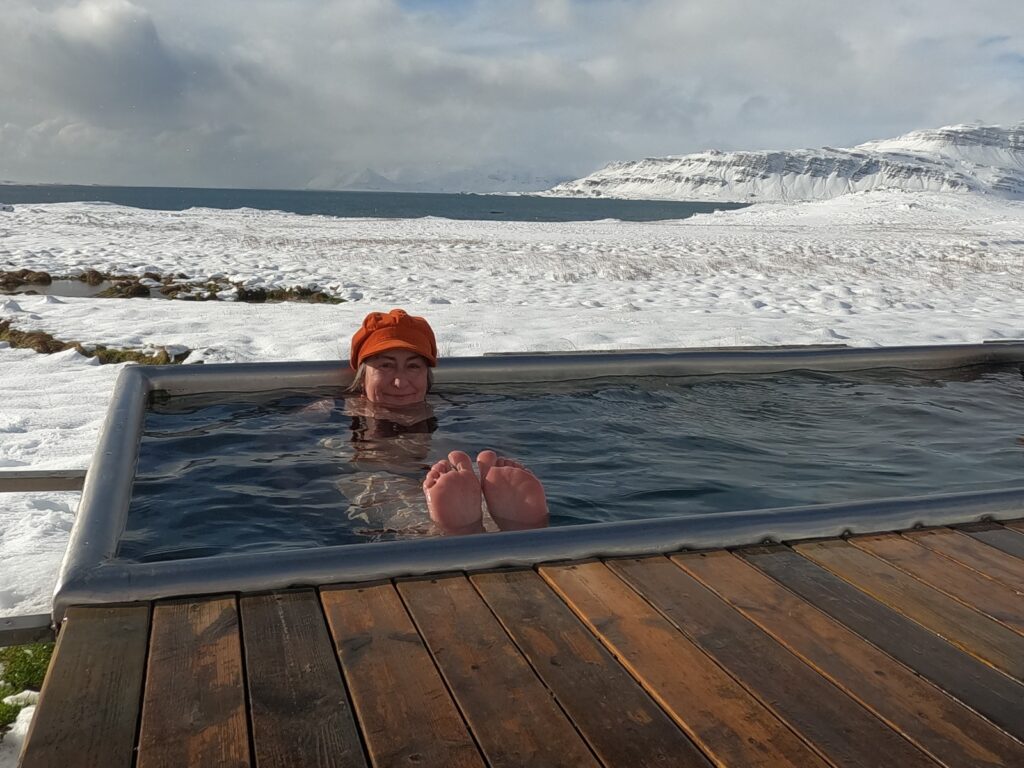
There is no fancy spa equipment out there, but you can actually find hooks for the clothes. The water is wonderful (quite warm), and the panorama is absolutely fantastic. This is a marvelous experience! NB, there are no signs, look for the steam!
